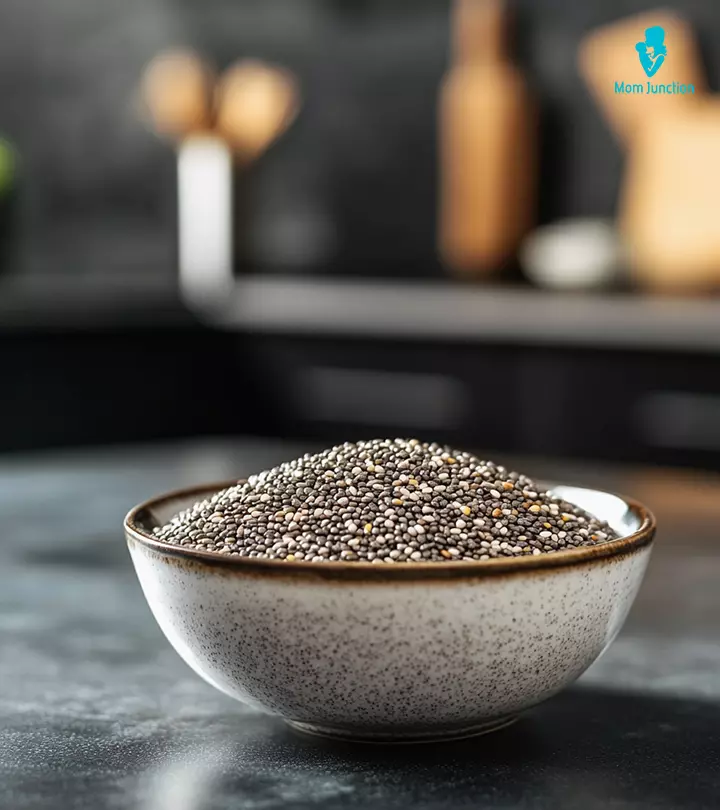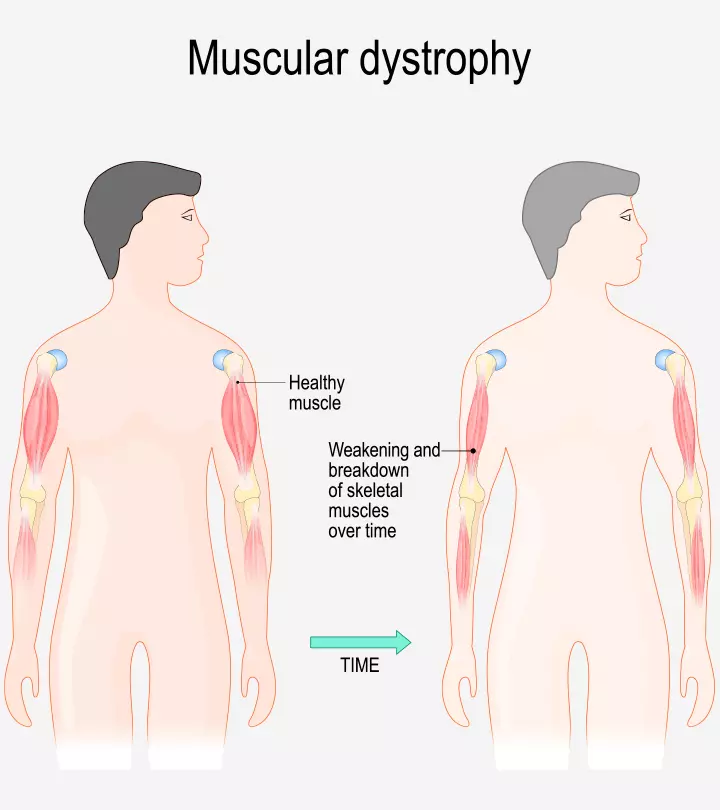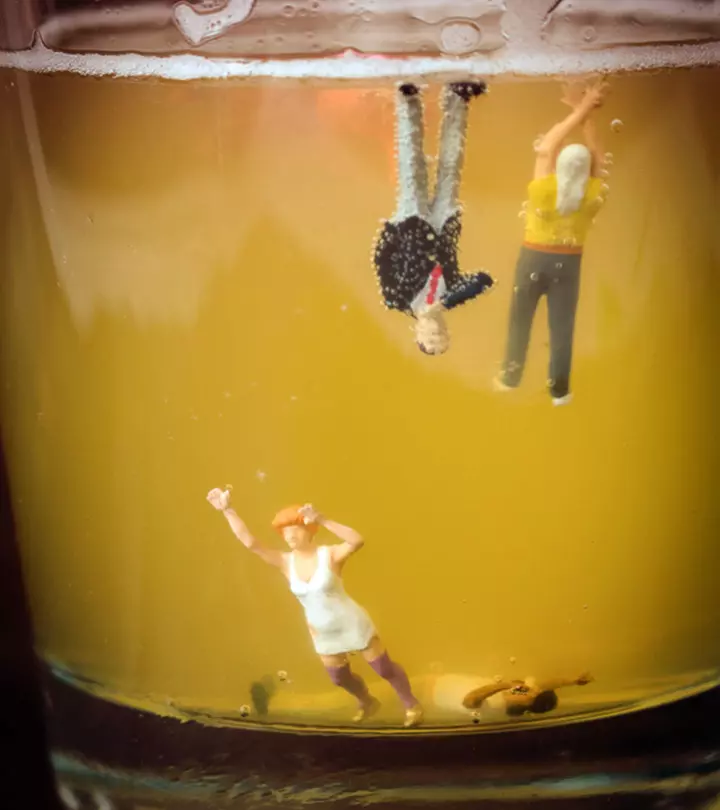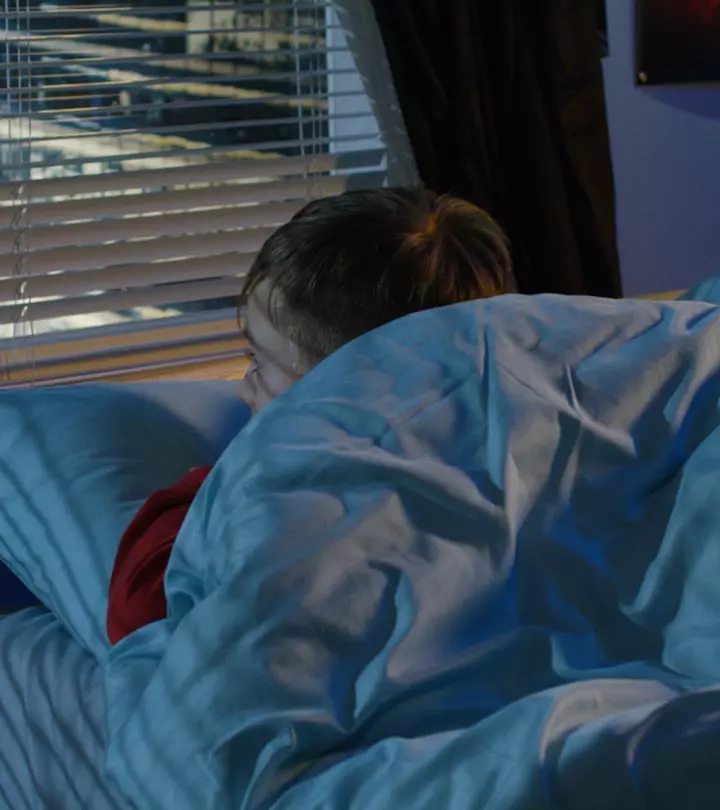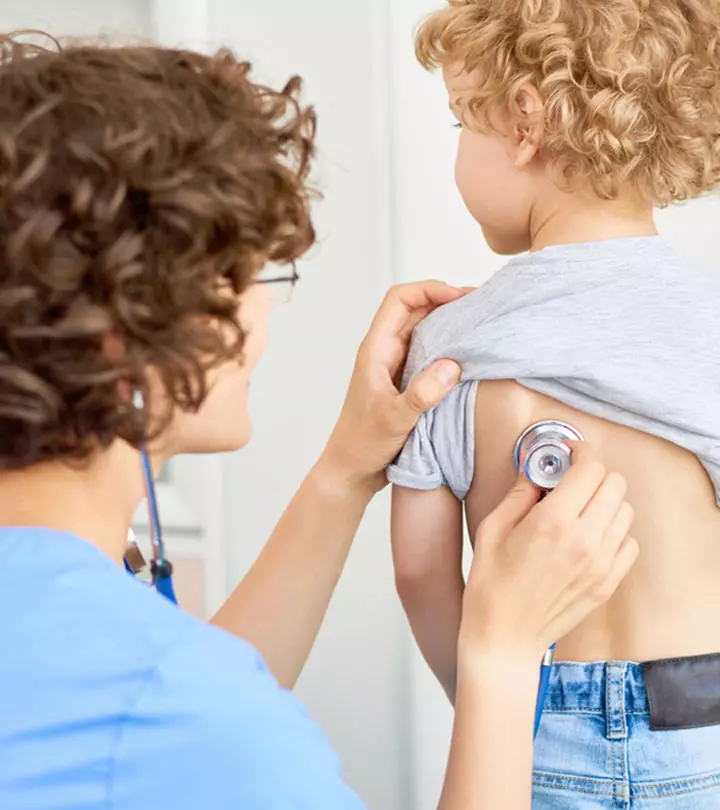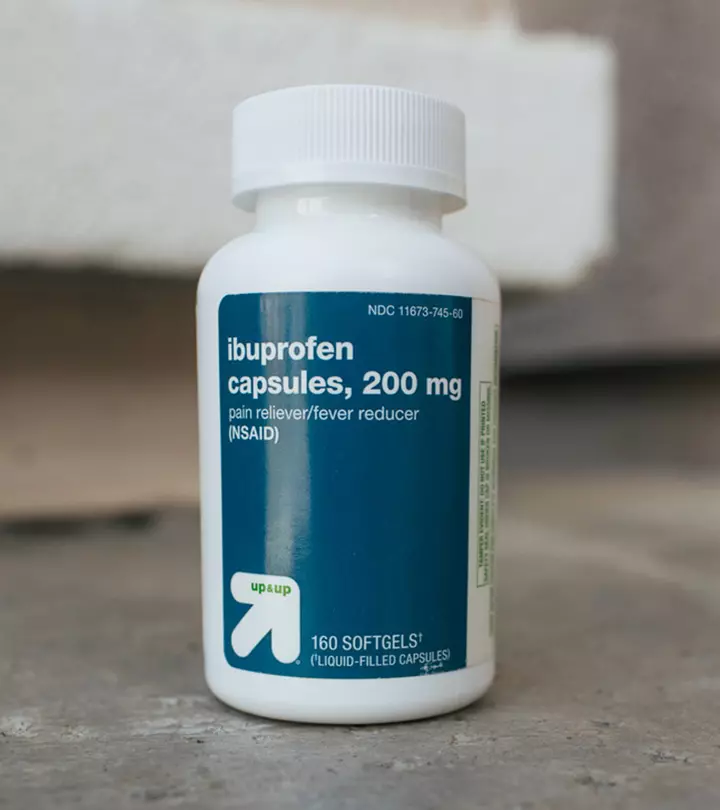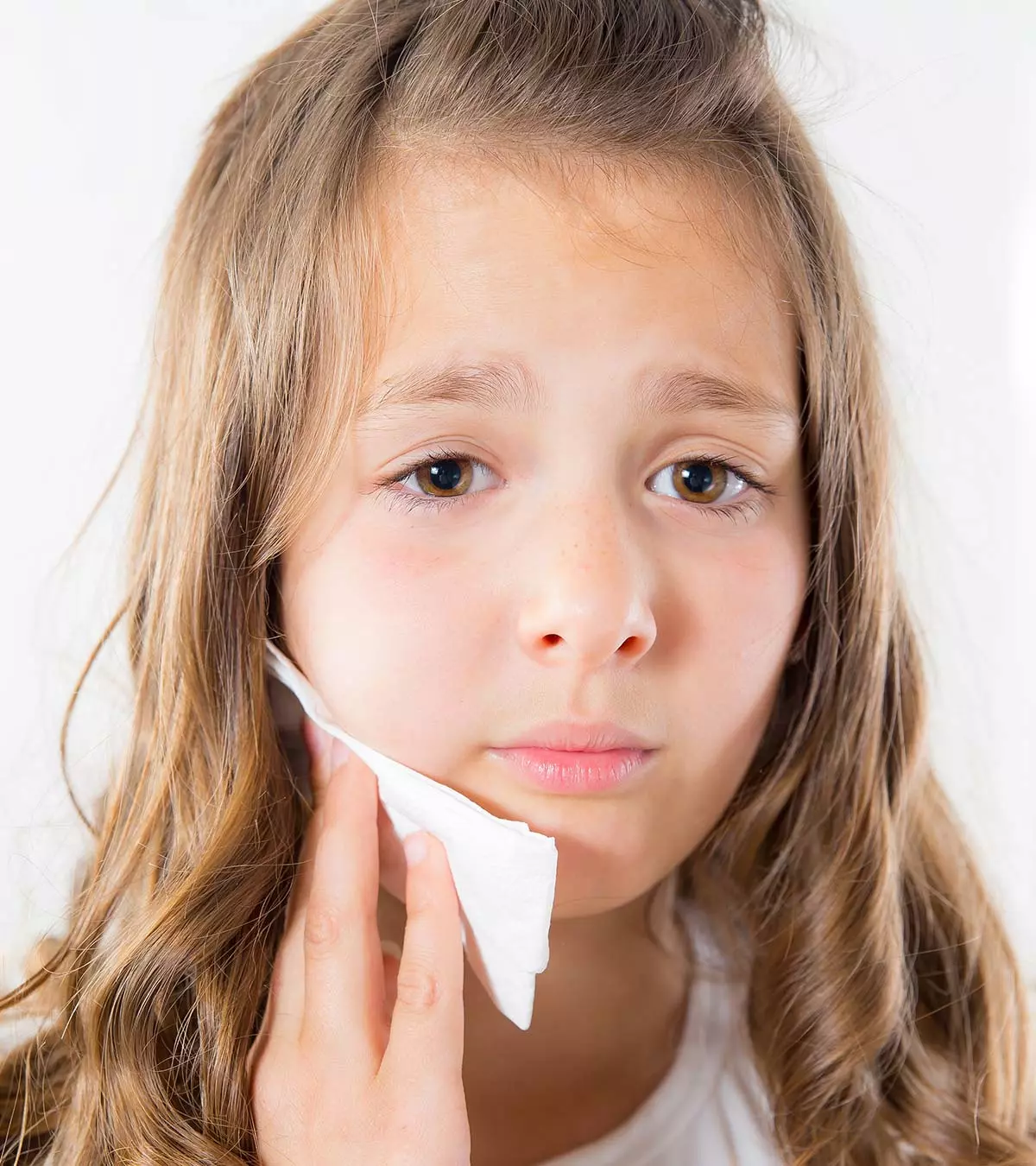
Image: Shutterstock
Jaw pain in children may lead to discomfort as it may interfere with eating and speaking. Many reasons may lead to jaw pain, but problems with the temporomandibular joint (TMJ) are the most common causes. Diagnosing the underlying cause can help in deciding an accurate treatment plan. Keep reading this post to know about the possible causes, signs, symptoms, diagnosis, treatment, and prevention of jaw pain in children to help them.
Key Pointers
- Temporomandibular joint dysfunction (TMJ), infections, dental issues, bruxism, chest discomfort, a fractured jaw, joint pain, sinusitis, trigeminal neuralgia, and improper tooth alignment are potential causes of jaw pain in youngsters.
- Children with jaw pain may experience difficulty opening or shutting their mouths, headaches, ear pain, difficulty biting and chewing, jaw sounds, pain while talking, yawning, chewing, swelling, and weariness.
- Treatment options for jaw discomfort in children include pain management (with ice/heat packs), medication, physical therapy, dental care for dental reasons, surgery for fractured jaws, and realignment of the jaw for malocclusion.
Possible Causes Of Jaw Pain In Children
The common reasons for jaw pain in children include injuries and medical conditions.
- Temporomandibular joint dysfunction: TMJ connects the lower jaw to the skull. A temporomandibular joint disorder can happen because of overexertion, anxiety, stress, clenching, or grinding of teeth, or due to an injury (1).
- Autoimmune conditions: Autoimmune disorders, specifically those affecting connective tissues, including rheumatoid arthritis, juvenile rheumatoid arthritis, juvenile idiopathic condylar resorption, psoriatic arthritis, ankylosing spondylitis, Sjogren’s syndrome, systemic lupus erythematosus, scleroderma, and mixed connective tissue disease may impact the temporomandibular joints (TMJs) which may in turn cause pain in the jaw. Depending on the severity of these conditions, the left, right, or both components of the TMJ may be impacted, affecting a person’s ability to speak, chew, swallow, make facial expressions, and even breathe (2).
- Headache or cluster headaches: Although rare in children, cluster headaches could be one of the reasons for jaw pain. This recurring pain may start at one part of the head and extend to the nose, cheek, jaw, and back (3).
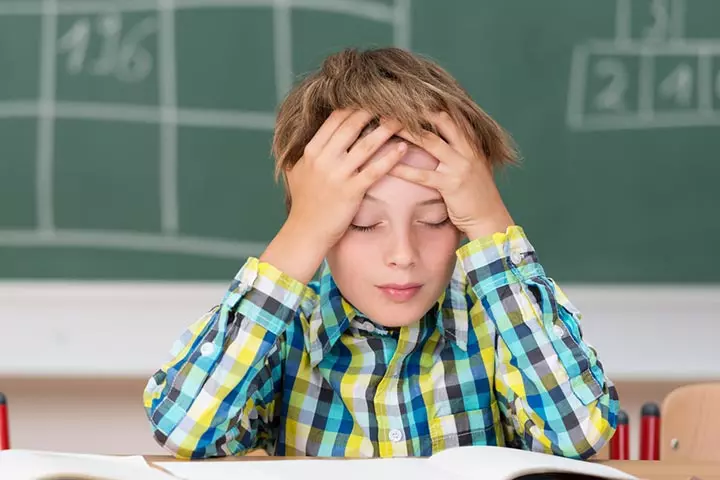
- Infections: Infections of the ear, teeth, or jaw area may cause pain in the jaw. For instance, osteomyelitis is a bacterial infection that may result in jaw pain in children (4).
According to Dr. Anjali Agrawal, chiropractor and internal health specialist from Los Altos, California, “A blocked ear can change the way we move our jaw because of the change of sensation, sometimes we open wider, or sometimes we open minimally. Depending on how intense the blockage is and/or how long it’s been going on, that can trigger jaw pain as well.”
- Dental problems: Dental infections such as an abscessed tooth in children can result in swelling and pain in the jaw (5). An additional possible dental cause is the impacting or impacted lower wisdom teeth in adolescents and young adults, which can cause jaw and earache in kids. Your dentist will often take a jaw and facial x-ray to eliminate or predict the risk of wisdom tooth impaction.
- Bruxism (teeth grinding): Some children may clench their jaws or grind their teeth often. It could cause pain or stiffness in the TMJ or the surrounding muscles, thus leading to jaw pain (6).
- Chest pain: In some cases, jaw pain could have its origin in chest pain. The pain could radiate from the chest to the shoulder, neck, and jaw (7).
- Broken jaw: Trauma to the lower jaw could cause a dental injury, and fracture or dislocation of the jaw, thus causing swelling and pain (8).
- Joint pain: If the child has joint problems, such as juvenile arthritis, then the pain could occur in various joints of the body, including the jaw (9).
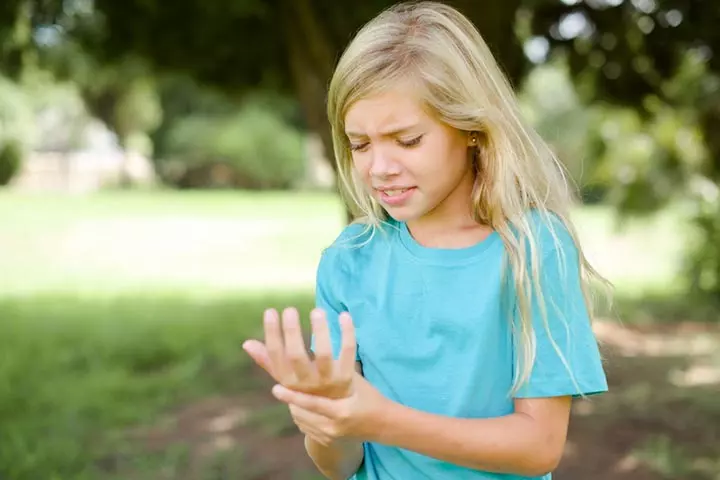
- Sinusitis: A condition called maxillary sinusitis, characterized by sinus infection and inflammation behind the cheeks, may cause facial pain, especially in the upper jaw (10).
- Trigeminal neuralgia: This condition causes chronic neuropathic pain and may occur in children too. The child could experience sudden and extreme pain in the face, including the jaw (11).
- Malocclusion of teeth: Malocclusion means a misalignment, which causes teeth to become crowded or crooked. In malocclusion, the teeth from the upper and lower jaws may not meet when the mouth is closed. This condition in children may cause jaw joint problems, bite problems, teeth grinding, and tooth decay, thereby causing jaw pain (12).
Jaw pain could also be accompanied by other symptoms, based on which the treatment is suggested.
Signs And Symptoms Of Jaw Pain In Children
Children, especially the older ones, can complain to a parent about jaw pain. However, if the pain is sporadic, it may be less noticeable to the child. In such situations, the following symptoms may indicate that the child has jaw pain (1).
- Difficulty in opening and closing mouth
- Headaches, ear pain, and ringing in the ears
- Trouble in biting and chewing and changes in feeding habits
- Clicking, grating, and popping sound from the jaw
- Pain near the ear and in facial muscles when yawning chewing or talking
- Swelling, pain, and fatigue of the jaw
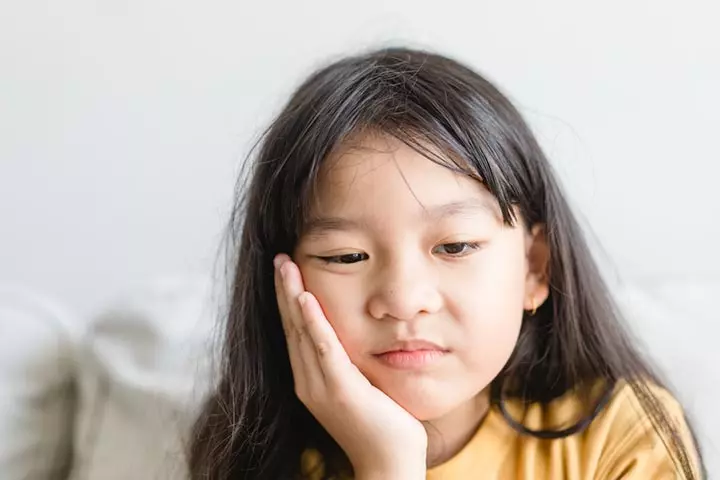
When To See A Doctor?
The symptoms of jaw pain could also be associated with other problems. If you are not sure if it is a jaw problem, then consult a doctor or dentist for further diagnosis.
Diagnosis Of Jaw Pain
Based on the signs and symptoms, the doctor may follow a series of diagnostic measures (13).
- A physical examination of the jaw, mouth, and neck bones.
- The doctor or dentist may want to know the history of the pain and other prevailing medical conditions.
- X-ray, MRI, or other radiology procedures may be considered if other steps yield no results.
The underlying cause of jaw pain will determine the treatment procedure. To aid in an accurate diagnosis, provide a detailed history of your child’s habits, such as teeth grinding or any recent injuries.
Treatments For Jaw Pain In Children
The treatment of jaw pain could vary depending on the severity of the condition. The following are the treatment options available for jaw pain in children.
- Pain management: If the pain is mild or the cause of the pain transient over a period, then the dentist or dental specialist may suggest pain management at home. Heat packs may be used to relax the pain, but make sure you are covering it with a cloth so that the child’s skin is not burnt. An ice pack wrapped in a towel or bag can also be applied to the jaw to reduce or treat the pain.
- Medications: In some cases, doctors may prescribe medicines such as ibuprofen or acetaminophen to relax muscles or treat inflammation. Severe cases may require administering muscle relaxant medicines to ease jaw pain (14).
- Physical therapy: Gentle massage, warm or cold compresses, and jaw stretching exercises may help relieve jaw pain (1).
- Splint: Occlusal splint is a soft acrylic device that wedges between the upper and lower sets of teeth within the mouth. The splint acts as a cushion and prevents the grinding of the teeth. It also helps provide stability to TMJ, thus easing jaw pain (15).
 Quick fact
Quick fact- Injections: Children with arthritis (although extremely rare) may require therapeutic joint injections. Steroidal compounds may be injected into the jaw joint to reduce the pain (16).
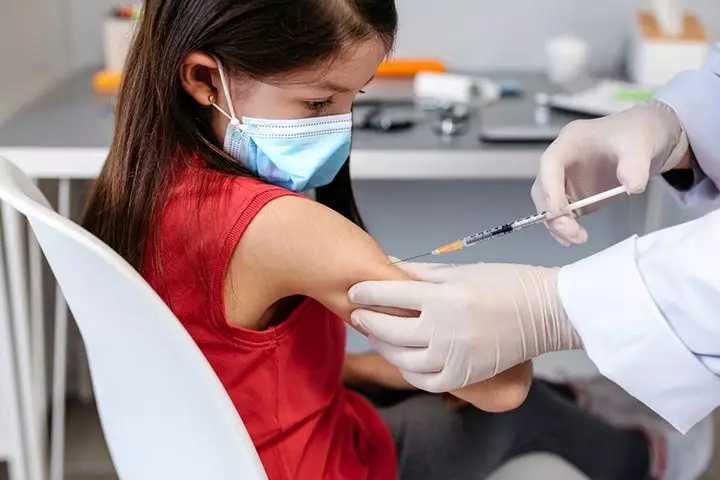
- Surgery: If the jaw is dislocated or injured, then surgery may be necessary to correct it. Surgical options include arthrocentesisiA diagnostic or treatment procedure in which a needle is inserted to remove fluid from joints , orthognathic surgeryiA jaw surgery used to correct deformities of the bones and upper and lower regions of the jaw , open joint surgery, arthroscopyiA surgical intervention used to diagnose and treat internal joint problems , and joint replacement (1).
Ways To Prevent Jaw Pain In Children
Jaw pain cannot be entirely prevented. However, some measures may be taken to avoid complications and prevent the pain from getting worse (1).
- Seek expert or professional advice at the earliest.
- Avoid eating chewy and hard foods as it could strain the jaw muscles
- Soft foods may be eaten, and smaller bites help
- Keep the jaw at rest as much as possible
- You may take your child to the dentist in the case of clenching or grinding teeth
- Regularly massage cheeks, temples, and jaw
- Regular movements and stretching may relax the joints
- Follow healthy oral habits to reduce the risk of tooth infections
- Relaxation techniques, like meditation, can help reduce anxiety and prevent habits such as teeth-grinding
 Quick fact
Quick fact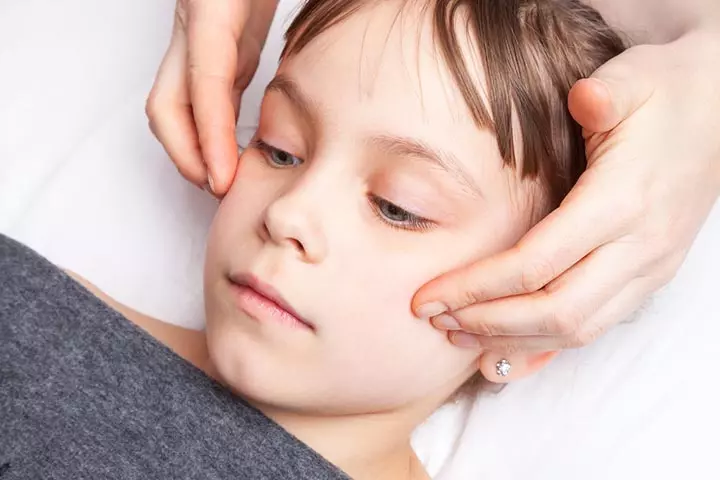
What Happens If TMJ Dysfunction Is Not Treated?
Jaw pain due to TMJ disorders is not a dangerous problem, but if the condition is not treated, a child’s quality of life may be affected. Untreated jaw pain may lead to the following problems (17) (18).
- Inflammation and joint damage
- Inner ear and dental issues
- Locked jaw
- Eating disorders
- Headaches
- Pain in shoulder, back, and neck
Frequently Asked Questions
1. What kind of jaw pain is heart-related?
Research shows that heart issues may cause discomfort in the jaws and teeth (19). Moreover, cardiac problems may lead to orofacial pain (20).
2. Can heart-related issues cause pain in the right side of the jaw?
As per medical experts, pain in the right jaw may indicate a heart attack, especially in females (21).
3. Can growing molars cause jaw pain?
Yes, molars (especially wisdom teeth) may cause pain and discomfort in the jaw if they don’t grow at the correct position, grow partially and get infected, or don’t have enough space to grow (22).
Jaw pain in children could develop from headaches, infections, dental problems, and many other reasons. As a result, these children may face difficulty opening and closing their mouths, chewing, or talking. Visiting a doctor can help understand the underlying cause of jaw pain. Children may require medications, physical therapy, or surgery to treat the condition. Although jaw pain is not a severe problem, it may affect a child’s life quality if left untreated. Therefore, be prompt in getting the right treatment and encourage your child to take preventive measures to minimize its risk.
Infographic: How Do You Know If You Have TMJ Dysfunction?
Temporomandibular joint dysfunction, or TMJ dysfunction, is one of the most common causes of jaw pain in children. Various other conditions may also cause a similar set of symptoms. Go through the infographic to learn how to differentiate TMJ symptoms from other conditions. Illustration: Momjunction Design Team
Illustration: Causes Of Jaw Pain In Children And Treatment Options

Image: Stable Diffusion/MomJunction Design Team
TMJ Disorders can be a painful and debilitating condition for children. It can affect a child’s ability to eat and speak. Learn more about the causes, symptoms, and treatments in this informative video.
References
- Temporomandibular Joint Dysfunction (TMJ); Boston Children’s Hospital.
https://www.childrenshospital.org/conditions/temporomandibular-joint-dysfunction-tmj - What is the Temporomandibular Joint?; The TMJ Association.
https://tmj.org/living-with-tmj/basics/ - Cluster Headaches; UCSF Benioff Children’s Hospital.
https://www.ucsfbenioffchildrens.org/conditions/cluster-headaches - C. Berglund, et al.; (2015); Primary Chronic Osteomyelitis of the Jaws in Children: An Update on Pathophysiology, Radiological Findings, Treatment Strategies, and Prospective Analysis of Two Cases.
https://www.ncbi.nlm.nih.gov/pmc/articles/PMC4575997/ - Dental Abscess with Facial Cellulitis.
https://www.fairview.org/ - Teeth grinding (bruxism).
https://www.nhs.uk/conditions/teeth-grinding/ - S. R. V. Reddy and H. R. Singh; (2010); Chest Pain in Children and Adolescents.
https://pedsinreview.aappublications.org/content/31/1/e1 - Facial Injuries.
https://www.healthlinkbc.ca/search?kw=illnesses+conditions+injuries+facial+injuries - Juvenile Arthritis.
https://www.arthritis.org/diseases/juvenile-arthritis - Acute Sinusitis.
https://www.health.harvard.edu/a_to_z/acute-sinusitis-a-to-z - Trigeminal Neuralgia.
https://www.stanfordchildrens.org/en/topic/default?id=trigeminal-neuralgia-134-66 - Malocclusion in Children.
https://www.urmc.rochester.edu/encyclopedia/content?contenttypeid=90&contentid=P01860 - R. L. Gauer and M. J. Semidey; (2015); Diagnosis and Treatment of Temporomandibular Disorders.
https://www.aafp.org/pubs/afp/issues/2015/0315/p378.html - TMJ Disorders.
https://www.mountsinai.org/health-library/diseases-conditions/tmj-disorders - Acquired Temporomandibular Disorders in Infants, Children, and Adolescents.
https://www.aapd.org/globalassets/media/policies_guidelines/bp_tempdisorders.pdf?v=new - Therapeutic Joint Disorders.
https://www.chop.edu/treatments/therapeutic-joint-injections - Dangers of Untreated TMJ.
https://www.perfectwhitesmile.com/tmj-dentist-beverly-hills/dangers-untreated-tmj/ - Temporomandibular Joint Disorders (TMD).
https://www.joms.org/article/S0278-2391(21)00663-7/fulltext - Jaw pain and heart attacks.
https://medlineplus.gov/ency/imagepages/9486.htm - Orofacial pain of cardiac origin: Review literature and clinical cases.
https://www.ncbi.nlm.nih.gov/pmc/articles/PMC3476012/ - Detecting a different kind of jaw pain.
https://vitalrecord.tamu.edu/detecting-a-different-kind-of-jaw-pain/ - Wisdom Teeth.
https://www.mouthhealthy.org/all-topics-a-z/wisdom-teeth/ - More Than Jaw Pain.
https://newsinhealth.nih.gov/2020/09/more-jaw-pain - Jaw Problems.
https://nras.org.uk/resource/jaw-problems/
Community Experiences
Join the conversation and become a part of our nurturing community! Share your stories, experiences, and insights to connect with fellow parents.
Read full bio of Dr. Farayi Shakespeare Moyana
- Dr. Anjali Agrawal is a non-cracking, non-popping chiropractor, who manages her private practice in Los Altos, California. An alumni of Palmer College of Chiropractic San Jose, California, Dr. Agarwal has over 16 years of experience in the field.
 Dr. Anjali Agrawal is a non-cracking, non-popping chiropractor, who manages her private practice in Los Altos, California. An alumni of Palmer College of Chiropractic San Jose, California, Dr. Agarwal has over 16 years of experience in the field.
Dr. Anjali Agrawal is a non-cracking, non-popping chiropractor, who manages her private practice in Los Altos, California. An alumni of Palmer College of Chiropractic San Jose, California, Dr. Agarwal has over 16 years of experience in the field.
Read full bio of Dr. Ritika Shah
Read full bio of Swati Patwal
Read full bio of Ghazia Shah








